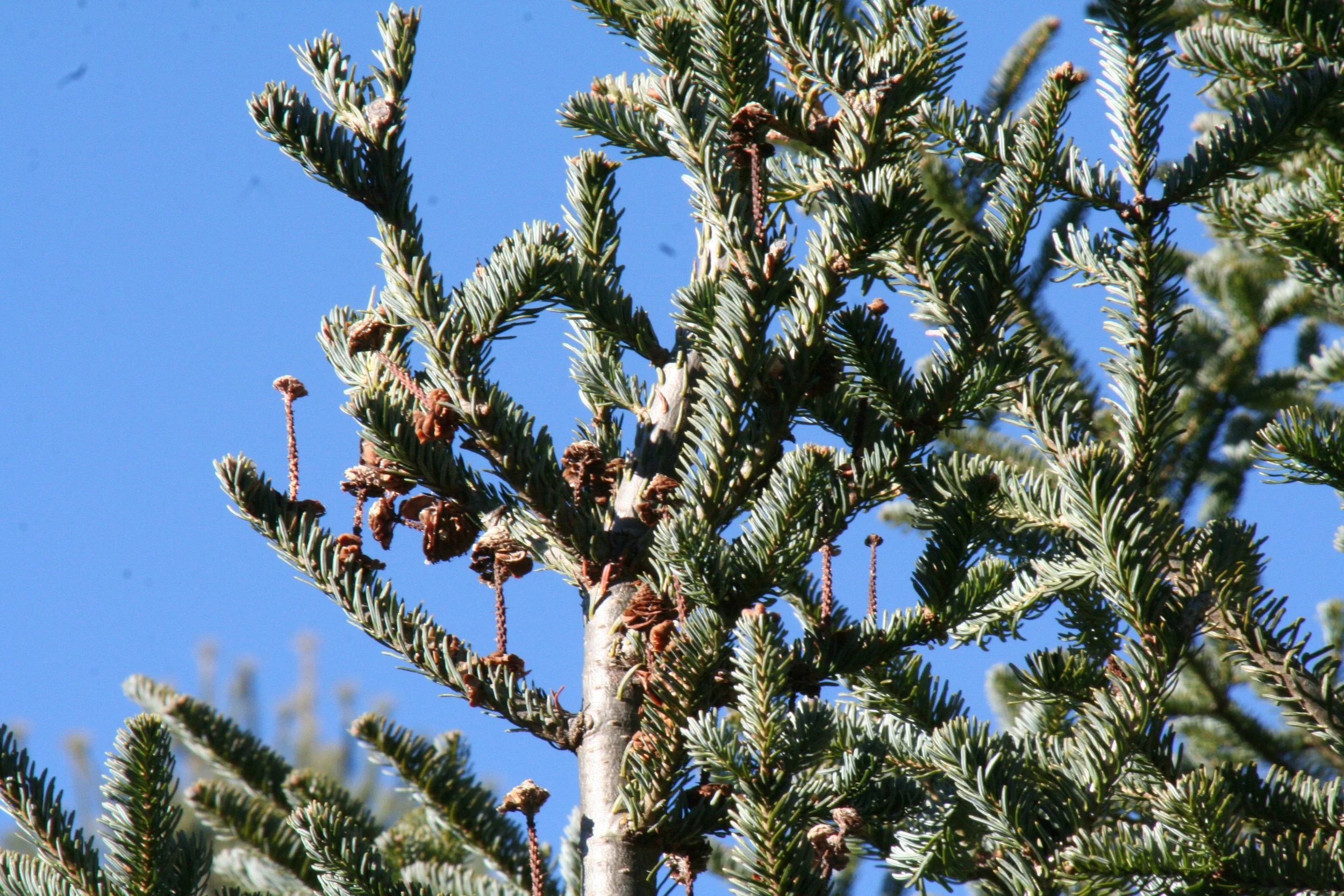Here in Southwest Virginia, our forests and fields are home to an array of mice, moles, shrews, voles, and squirrels. These small mammals may be unwelcome in sheds or barns as they try to find sheltered places to pass the winter, but they are far from pests. Our ecosystems are built around these small mammals, who provide food for raptors, snakes, and larger mammals, who spread seeds and fungus, and who build vast tunnel networks that aerate the soil and can be used as shelter by other species.
A red squirrel munches on a woody nut.
Each species of small mammal fills a different niche in the larger system. Some, like mice, are primarily herbivores, while others are tiny carnivores (shrews) or insectivores (moles). To get through winter safely, though, they all have similar needs: a cozy burrow, and plenty of food. These small mammals do not truly hibernate, although they certainly become less active during colder months and some may experience a similar state of torpor. Most have very fast metabolisms, so they need to consistently wake and eat in order to keep their bodies functioning. Mice, squirrels, and voles will create stashes of food to get them winter months, when foraging is more energetically taxing and food resources are harder to find. Other small mammals, like shrews, remain more active.
The entrance to a small forest tunnel.
Shrews have the fastest metabolism of Virginia’s small mammals, needing to feed every couple hours on spiders, centipedes, earthworms, or other insects. Often, shrews will shrink in size as colder months approach, and will physically reduce the size of their most major internal organs, including liver and brain. Scientists aren’t yet sure how these little creatures pull it off, but that shrinking means less energy must be consumed, and that makes all the difference. Their fast metabolism and thick coat is enough to keep them warm on winter hunts.
A woodland jumping mouse munches on a seed.
The excessive eating and storing of food seen in mice, squirrels, moles, and voles is a behavior aptly known as hyperphagia. Yes, even moles! Moles, who feed mainly on worms, will create deep “kitchen areas” within their complex tunnel systems, where they can store thousands of worms and larvae. In order to prevent the worms from simply tunneling away through the soil, moles will severely injure some of the worms they catch, biting off their heads and depositing them in the stash for later. Mice, squirrel and vole habits are more familiar to most, as they can easily be seen scurrying about in the fall, aggressively collecting as much as they can. Voles tend to prefer tubers, grasses, and bulbs, which they will collect and store in their own tunnels. Squirrels prefer nuts, including acorns, hickory nuts, walnuts, chestnuts, and beech nuts. Nuts are packed with rich fats and protein. Squirrels, including red squirrel, fox squirrel, and gray squirrel, will form dense caches in suitable tree hollows, and bury nuts around their nest tree. Many of the nuts they bury are never recovered by the squirrel, and have the chance to grow into trees after being planted by a furry friend. Mice tend to store seeds and grains, but are multifaceted generalists. They will nest together in family groups in tunnel systems, in tangled roots at the base of trees, or even up trees, in dens lined with soft fur and with plenty of food hidden nearby.
Pine cones stripped bare by an opportunistic critter, still on the tree.
How people can help small mammals in winter:
A deer mouse perched in a tree.
To help these essential and adorable wild animals survive winter, consider letting your gardens go wild for the off-season. As plants die back in the colder weather, let the drying stems stay right where they are for winter. Wait until just before spring planting to clear them out. Wildlife can make good use of remaining seeds, and will nest under dense patches of dry vegetation. Burrows likely run through your garden, just out of sight, and pulling the garden can disturb tunnels and stashes. The better habitat that a critter has outside, the less pressure they have to try and find a spot to stay inside your home!
Sources of additional information:













